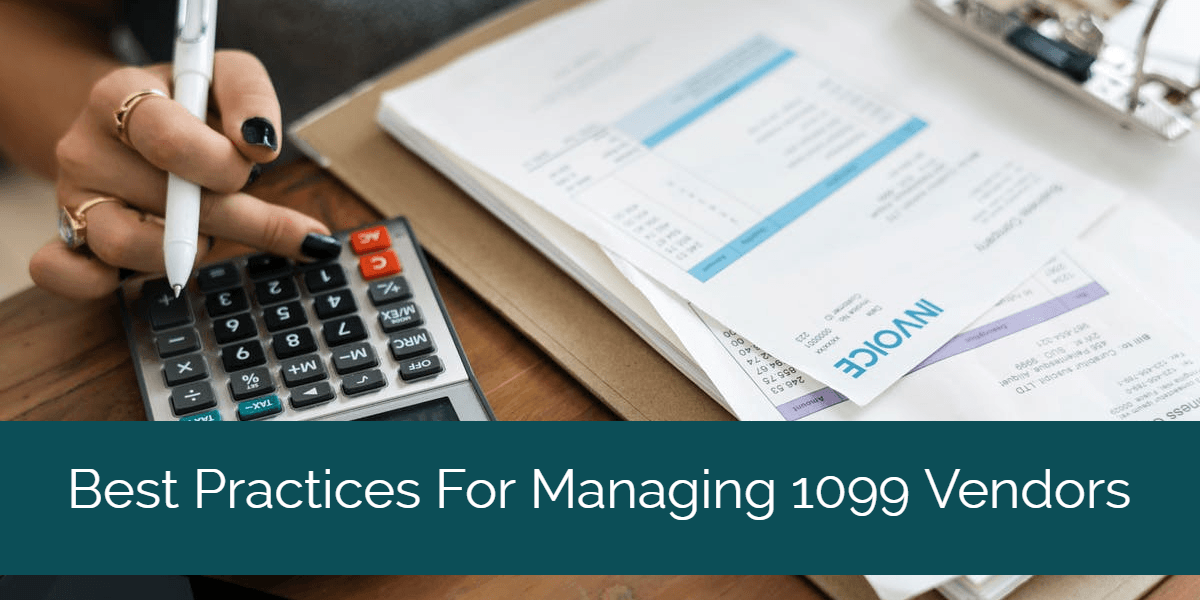
It can’t be denied that when tax season comes along, there are a lot of forms to file. One of the most common tax forms for small businesses, aside from W-2s for your full-time employees, is the 1099-MISC form.
As with all types of tax-related business, there’s a way to make this filing super easy. And that way revolves around—you guessed it!—being informed of the requirements, and planning accordingly.
What Is a 1099-MISC?
The 1099-MISC is an income report that deals with compensation received by certain types of vendors or service providers.
The easiest way to know whether your vendor will require filing a W-2 or a 1099-MISC is to ask them! Before you begin working with a vendor for the first time, ask which you’ll need to send them. An easy way to keep track is to start a vendor filing list in Xero or whatever accounting software you use—you can easily categorize the vendors as you work with them throughout the year.
To make sure you get all the information you need for filing the 1099-MISC, I recommend attaching the W-9 Form to your vendor contact in Xero. The W-9 will include all the information you need from them.
Who Needs a 1099-MISC form?
There are two requirements for reporting a service payment to a vendor with the 1099-MISC. You’ll use this form when you’re reporting
- A payment to an unincorporated vendor. This would be a vendor that is registered as an S corporation, limited liability company or sole proprietor.
- Any vendor you paid more than $600 over the course of the year.
So, for example, if you paid your tech-savvy nephew $750 to install your new inventory management software, you’d report that on the 1099-MISC. But if you paid the same amount to a national chain, you wouldn’t use the 1099-MISC to report it. Make sense?
There are a few other situations in which you’d file the 1099-MISC form:
- For services performed by someone who isn’t your employee
- Anyone you paid $10 or more in royalties. (This would be payments from from intangible property like patents copyrights or trademarks.)
- Prizes and awards of $600 or more that are not for services performed.
- Payments of $600 or more made in the course of business to doctors and other suppliers of medical or health care services
- For attorneys and a few other categories (see the IRS web page for the complete list)
How to File the 1099-MISC
For each vendor that qualifies, there are two copies of the 1099-MISC that you’ll need to file as a small business.
- Copy A goes to the IRS
- Copy B goes to the vendor you’re paying
Note: the 1099-MISC forms on the IRS website cannot be scanned. If you want to file by mail (instead of e-filing), you’ll have to order the form you need by calling 1-800-TAX-FORM (1-800-829-3676) or through www.irs.gov/Businesses/Online-Ordering-for-Information-Returns-and-Employer-Returns. I know, it sounds like a big pain in the neck, but filing non-scannable forms could trigger a financial penalty. So it’s worth getting right!
At The Bottom Line CPA, we file the 1099 Forms with the IRS using Track1099. This is a program that makes life easy because it stores all the information from year to year so you only need to add the information for new vendors. It also integrates with Xero, so if you populate Xero vendor information, then it will sync with 1099 and you shouldn't have to do much besides checking your list. It’s a pretty handy way to make sure all your 1099-MISC filing gets done right.
The Bottom Line
The best way to make sure 1099-MISC filings don’t bog you down at year-end is to collect as much info on your vendors as you can, before you start working with them.
If you’re a Profit Path member, we’ve got a little something extra for you! Jessica put together an awesome step-by-step training on how to file the 1099-MISC. Click here to access this special members-only benefit!
